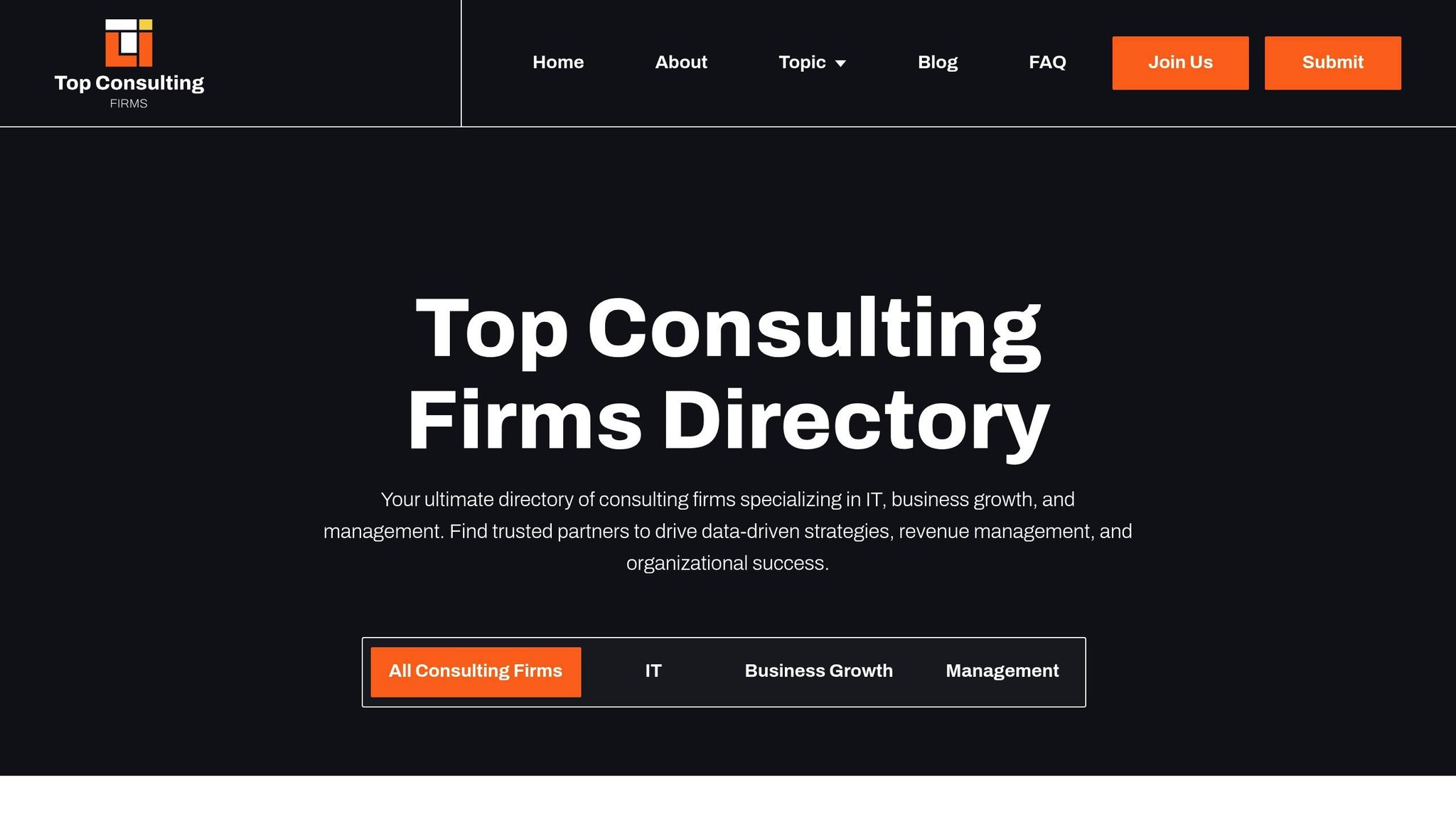Custom operational reporting is all about creating reports tailored to specific business needs. Unlike generic templates, these reports focus on the metrics that matter most to your organization. Here’s why they’re useful and how to make them work for you:
- Customization: Design reports that align with your goals, offering flexibility in structure, content, and visuals.
- Real-Time vs. Periodic Data: Real-time reporting helps with quick decisions, while periodic reporting works for steady operations. A hybrid approach often balances both.
- Stakeholder Focus: Identify who needs the reports and ensure they address their specific concerns and goals.
- Automation: Save time by automating data collection and report generation, reducing errors and ensuring consistency.
- Effective Tools: Look for tools with strong visualization, real-time updates, and integration with your existing systems.
- Avoid Common Mistakes: Understand user needs, simplify visuals, and avoid overloading reports with unnecessary data.
Quick Tip
Engage stakeholders early, define clear objectives, and regularly refine your reporting process to stay aligned with evolving business needs. Well-structured, user-friendly reports can improve decision-making and efficiency significantly.
Identifying Stakeholders and Setting Reporting Goals
Who Are the Key Stakeholders?
Figuring out who needs access to your operational reports is the first step toward creating reports that truly work. These key stakeholders are the people or groups directly tied to your business's success. Their involvement is essential to making your reports effective and impactful.
Start by identifying both internal stakeholders - like employees, managers, and executives - and external ones, such as customers, suppliers, and investors. From there, separate primary stakeholders (those directly affected) from secondary stakeholders (those with an indirect interest). This distinction helps guide the design of your reports. Analyzing stakeholders based on their influence, interest, and impact will help you prioritize their needs.
A simple but effective way to understand what matters to stakeholders is to ask them directly. This ensures you capture their specific concerns and priorities. By doing this, you turn stakeholders into active participants in the reporting process, rather than just passive recipients of information.
Once you’ve identified the key players, the next challenge is aligning their needs with your business goals.
Aligning Reports with Business Objectives
Operational reports are most effective when they directly support your organization’s strategic goals. When every team member understands how their work contributes to these goals, it can significantly boost both motivation and results.
To achieve this, align your KPIs with your broader objectives. For instance, implementing objectives and key results (OKRs) to link team performance metrics with overall business targets can increase goal achievement by as much as 50%.
Start by clearly defining SMART objectives - Specific, Measurable, Achievable, Relevant, and Time-bound - at the organizational level. These objectives can then be broken down into department-specific priorities, encouraging collaboration across teams. The process involves reviewing your main goals, identifying 2–3 KPIs that measure progress toward those goals, and scheduling regular quarterly reviews to ensure everything stays on track.
This clarity in objectives lays the groundwork for gathering precise requirements.
Gathering and Prioritizing Requirements
Not all stakeholders have the same level of influence or urgency, so prioritizing their needs is key to making the most of your resources. Start with a thorough stakeholder analysis to identify both internal and external groups, then dive deeper to understand the specific problems they’re looking to solve.
Use data-driven tools and techniques to rank stakeholders by their importance and potential impact. Pay attention to both explicit needs (what they say they need) and implicit ones (what their actions or roles suggest they need). Setting clear, measurable expectations ensures everyone is on the same page. Tailor your communication strategies to suit different audiences - for example, a C-suite executive will require different information than a front-line manager.
Regular check-ins with stakeholders help maintain alignment and allow for adjustments as market conditions or organizational priorities evolve. These ongoing reviews not only reinforce how team efforts contribute to overall success but also provide opportunities to refine requirements and adapt to changing business needs.
Key Features of Customizable Reporting Tools
Core Features to Look For
Choosing the right reporting tool can have a big impact on your operations. Companies using real-time, interactive operational reports see 10–30% higher revenue compared to their competitors. That’s why selecting the right features is so important.
At a minimum, every customizable reporting tool should include these five key capabilities: data analysis, data visualization, static reports, ad hoc reports, and dashboards. Together, these features turn raw data into actionable insights that can guide decision-making across your business.
Performance matters. Your platform must handle large, multi-source datasets with automated processing. Without this, even the most feature-packed tool will struggle to keep up with enterprise-level demands.
Ease of use is non-negotiable. A user-friendly interface encourages adoption across your organization, whether users are data experts or not. Tools with drag-and-drop functionality and pre-built templates can significantly reduce training time.
Customization is key. Great tools let you tailor reports to meet the specific needs of each department. Whether it’s different data formats or unique visualizations, flexibility ensures stakeholders get exactly what they need to make informed decisions.
Security can’t be overlooked. Look for tools that offer robust security measures like role-based access controls, data encryption, and multiple layers of protection. This is especially important when dealing with sensitive information.
Lastly, make sure the tool integrates seamlessly with your current systems to avoid unnecessary complications.
Evaluating Platform Compatibility
Integration capabilities are crucial to ensure your new tool works smoothly with your existing systems, such as CRMs, ERPs, or cloud storage platforms.
Real-time data connectivity is another must-have. In today’s fast-moving business world, your reporting tool should update instantly as new data comes in, keeping you ready to act on changing conditions.
Planning for scalability is equally important. As your business grows, your reporting tool should handle larger data volumes and more complex datasets without slowing down. Pilot testing the tool can help confirm that it meets your needs and integrates easily.
Don’t forget about data source compatibility. Your tool should connect to your current systems and be ready to support future ones, helping you avoid costly migrations later.
Once compatibility is sorted, automation becomes the next step in creating efficient reporting workflows.
The Role of Automation
After establishing core features and compatibility, automation takes reporting to the next level. It transforms manual tasks into streamlined processes, saving time and reducing errors. In fact, automated reporting tools can cut report generation time by up to 90% compared to manual methods.
Automated data collection removes the need for manual gathering, pulling information directly from various sources. This not only saves time but also minimizes human error, giving you more confidence in the accuracy of your reports.
With scheduled report generation, you can set up reports to run automatically based on key metrics and timelines. This ensures stakeholders always have access to the data they need without constant manual updates.
Real-time processing takes it a step further by monitoring data streams and updating reports instantly. This capability allows your organization to respond quickly to changing conditions.
Another major advantage is error reduction. Manual processes are often prone to mistakes like incorrect calculations or formatting issues. Automation eliminates these risks, delivering consistently reliable reports every time.
"Automated reporting tools empower businesses to analyze data quickly and make better decisions." – SolveXia
The combination of speed, accuracy, and reliability makes automation a must for businesses looking to excel in operational reporting. When evaluating tools, prioritize platforms that combine robust automation with the core features your organization needs.
Create Custom Reports in Minutes: A Step-by-Step Guide
sbb-itb-97f6a47
Best Practices for Designing and Implementing Reports
Custom reports should be both clear and actionable to genuinely support operational decisions.
Structuring Reports for Clarity
A well-structured report ensures that key insights are easy to find and understand. The foundation of good reporting lies in knowing your audience before you begin drafting.
"Organizing reports for clarity involves structuring them in a logical and reader‐friendly manner. Start with a clear and concise executive summary that outlines the key findings and recommendations." – Jusleen Icho, Turning Dead Ends into Doorways
Start with an introduction that explains the purpose and scope of the report, followed by clearly defined sections that address specific areas of the data. Use headings to guide readers to the information they need.
To make the report more digestible, break up large blocks of text with bullet points, numbered lists, and white space. Long paragraphs can overwhelm readers and bury important details. Clear, descriptive headings help the report flow logically, making it easier to follow.
Stick to simple, straightforward language. Avoid jargon and acronyms that may confuse stakeholders from different departments. Writing in an active voice with concise sentences ensures your message is clear and direct.
Consistency is key. Whether you’re reporting on daily operations or quarterly performance, a familiar structure helps readers quickly locate the information they need, aligning with their decision-making process.
A clear structure also lays the groundwork for effective data visualization.
Visualizing Data Effectively
Good visuals enhance a report’s structure by turning numbers into insights that drive decisions. Data visualization bridges the gap between raw data and actionable takeaways, empowering organizations to act swiftly and wisely.
Start by understanding your audience. Executives may prefer high-level trend summaries, while managers often need detailed breakdowns to act on the data immediately.
Choose the right chart for your data. Line charts work well for trends, bar charts for comparisons, and scatter plots for showing relationships - like how employee satisfaction might correlate with productivity.
Keep visuals simple. Overly complex designs can confuse readers. Use high-contrast colors and, where appropriate, add patterns or textures to make data points easier to distinguish, especially for users with visual impairments. Interactive elements like tooltips or filters can also help users explore the data in ways that matter most to them.
Test your visualizations with your audience and refine them based on feedback. What seems clear to the report creator might not resonate with every reader. Regular updates and adjustments ensure your visuals remain effective tools for decision-making.
Avoiding Common Reporting Mistakes
Avoiding common mistakes is essential to creating reports that meet user needs. One major pitfall is failing to understand the end user's goals. As Steven Tripp from Wynne Systems highlights, "The Number 1 issue that we see repeated time after time across businesses is the report builder doesn't understand the end user's goal".
Engage with end users beforehand to learn about their decision-making needs and preferred data formats. This step can help you sidestep many design missteps.
Don’t overload dashboards with too much information. When every metric is given equal weight, critical data gets lost in the noise. Focus on what matters most to each audience, and consider using multiple pages for extensive datasets.
Move beyond spreadsheets. Use robust reporting tools to ensure data consistency and clarity.
Choose appropriate visualizations and configure them correctly. Complex charts or excessive use of colors can make data harder to interpret. Eliminate any visual elements that don’t add value.
Provide training sessions to help users understand how to navigate and interpret the reports. Even the most well-designed report won’t be effective if users aren’t confident in how to use it.
Design with mobile devices in mind. As more decisions are made on the go, reports need to be easily accessible on smartphones and tablets.
Before finalizing your report, gather feedback. Colleagues can point out confusing areas or suggest improvements. Consistency in fonts, colors, and layouts across your reports not only makes them easier to read but also reinforces a professional appearance for your organization.
Using Consulting Expertise for Reporting Optimization
Many organizations try to solve operational reporting challenges on their own, but bringing in consulting expertise can speed up the process and help avoid expensive mistakes.
Benefits of Expert Guidance
Consulting firms play a key role in transforming operational reporting by modernizing outdated processes, reducing inefficiencies, and aligning systems with long-term business objectives. These experts not only refine reporting workflows but also create solutions tailored to your specific operational metrics.
Here’s why their expertise matters: Manual tasks can consume up to 60% of an employee's time, and underutilized systems are projected to cost companies $104 million in 2024. Consultants address these issues by identifying and implementing cost-effective technology solutions that deliver immediate improvements while supporting long-term goals. This helps businesses avoid the financial drain of underutilized tools.
Consultants typically start with a detailed analysis of current operations to pinpoint opportunities for improvement and propose solutions tailored to specific performance challenges. They also streamline how data is collected and analyzed, providing real-time insights into business performance. Drawing on their experience across various projects, consultants can help organizations sidestep common mistakes and achieve faster results.
The financial benefits of consulting are hard to ignore. Companies investing in management consulting services can see a return on investment (ROI) of up to 800%. Businesses that adopt advanced technology with consulting support may experience a 20–30% boost in productivity while cutting operational costs by as much as 15%.
Take ReSource POS, for example. This provider of point-of-sale system services improved its service management by integrating mobile ERP solutions. The result? Better documentation, increased revenue, and lower operational costs.
Kaufman Rossin exemplifies how consulting firms can help businesses identify, prioritize, and implement improvements that deliver measurable results. Their strategies turn reporting from a reactive process into a powerful strategic tool.
These results emphasize why finding the right consulting partner is so important. To simplify this process, businesses can use the Top Consulting Firms Directory.
Using the Top Consulting Firms Directory

With the clear advantages of expert guidance, selecting the right consulting partner for operational reporting optimization requires careful consideration of their expertise, track record, and how well they align with your company’s culture. The Top Consulting Firms Directory connects businesses with specialists in digital transformation, data analytics, and operational reporting solutions.
The directory highlights firms with proven skills in areas essential for reporting success, such as cloud services, data analytics, IT infrastructure, and digital transformation. These capabilities are critical for building scalable reporting systems that grow alongside your business.
When choosing a consulting firm, prioritize those with experience in your industry and a history of solving challenges similar to yours. Request case studies, client testimonials, and success stories to evaluate their past performance.
It’s also important to assess their approach to resource allocation and project management. You’ll want a firm that has enough capacity to focus on your project and the flexibility to adapt to unexpected changes during implementation. The best consulting relationships involve close collaboration with your internal team and clear guidance on best practices.
Don’t overlook pricing transparency. Consulting firms may offer various pricing models, such as monthly retainers, project-based fees, or a la carte services. Choose a structure that fits your budget and project scope while avoiding hidden costs.
As the consulting market continues to grow at an annual rate of 4.63% through 2028, having access to curated expertise is more important than ever. The directory helps businesses find partners who understand the strategic importance of operational reporting.
Finally, interview multiple firms from the directory to ensure the best cultural and technical fit. Strong collaboration and clear communication are essential for successful reporting implementations. The right consulting partner will not only explain how they’ll add value but also help you measure the impact of their work throughout the engagement.
Conclusion and Key Takeaways
Recap of Best Practices
Effective reporting boils down to two essential elements: clarity and purpose. Custom reporting works best when the metrics align directly with business goals. Instead of tracking every possible metric, successful organizations zero in on Key Performance Indicators (KPIs) that provide actionable insights. This focused strategy avoids information overload and ensures decisions are based on meaningful data.
Accurate and automated data collection is the backbone of effective reporting. Strong reports emphasize the most relevant KPIs, present data clearly through user-friendly dashboards, and explain the context behind the numbers. Features like color-coded visuals make insights easier to grasp, while automation ensures reports are consistent and delivered on time.
Engaging stakeholders throughout the reporting process is another critical element. Companies that define clear objectives, select reliable data sources, and use tools with strong visualization capabilities create systems that people actually want to use. This approach builds a solid foundation for continual improvement.
Focusing on Continuous Improvement
Continuous improvement isn’t just a nice-to-have - it’s a necessity in today’s fast-moving business world. Companies that prioritize operational enhancements often see substantial benefits, including 25% higher productivity and 20% lower operating costs compared to their peers.
Tracking progress consistently can double the likelihood of hitting improvement goals. This success often stems from setting clear, measurable objectives using frameworks like SMART and making small, testable changes over time. For example, manufacturing companies report cutting production costs by as much as 30%, while service-based firms achieve delivery times that are 40% faster through effective improvement strategies.
Data-driven organizations leveraging customized insights report a 73% boost in operational efficiency. Meanwhile, companies that tailor their reporting processes to user needs see an average 50% increase in client retention. Regularly reviewing and refining reporting strategies ensures they keep pace with changing business objectives. Visual metrics enhance stakeholder engagement by 15%, and user-focused metrics contribute to a 30% rise in customer satisfaction.
The best results come from combining real-time analytics with regular review cycles. This approach helps track performance, make informed decisions, and pinpoint areas for improvement. Companies that invest in thoughtful planning achieve their goals 60% faster, proving that a systematic approach to continuous improvement delivers tangible outcomes.
FAQs
What’s the best way for businesses to balance real-time and scheduled data in custom operational reports?
To manage real-time and scheduled data effectively, businesses should use real-time dashboards for quick insights and pair them with scheduled reports for a more in-depth look at trends. This combination allows for fast decision-making while keeping an eye on the bigger picture.
Automating data updates and implementing clear data governance policies can help maintain accuracy and consistency. By focusing on both immediate needs and long-term analysis, businesses can produce reports that are both practical and trustworthy.
What should organizations consider when selecting a customizable reporting tool?
When selecting a reporting tool that offers customization, it's essential to focus on features that align with your organization's specific needs. Opt for tools that provide extensive customization options, enabling you to tailor reports to meet your business objectives. Make sure the tool can integrate seamlessly with your current data sources and offers real-time data access so you always have the most up-to-date information.
You’ll also want to consider the tool's user-friendliness, ensuring your team can adapt to it without a steep learning curve. Look for automation features to eliminate repetitive tasks and save time, and prioritize tools with strong visualization capabilities to present data in an engaging, easy-to-understand format. Focusing on these aspects will help you choose a tool that enhances decision-making and streamlines operations.
How can consulting services improve operational reporting for businesses?
Consulting services play a key role in improving operational reporting by offering specialized expertise to fine-tune processes, pinpoint inefficiencies, and implement customized solutions. With their fresh, outsider perspective, consultants can help businesses identify overlooked issues and adjust their reporting systems for better accuracy and efficiency.
Beyond that, consultants bring valuable knowledge of advanced tools and methods, ensuring operational reports are aligned with a company’s strategic objectives. Their guidance can simplify workflows, minimize errors, and make reporting systems more flexible to adapt to changing business demands.


